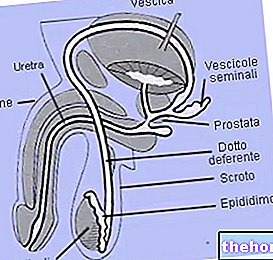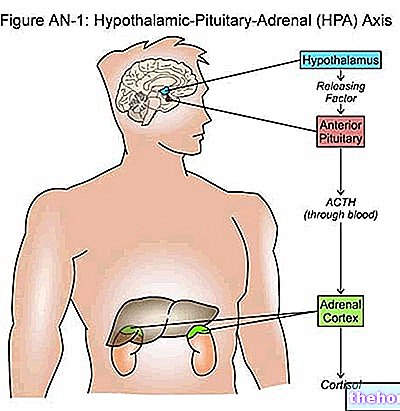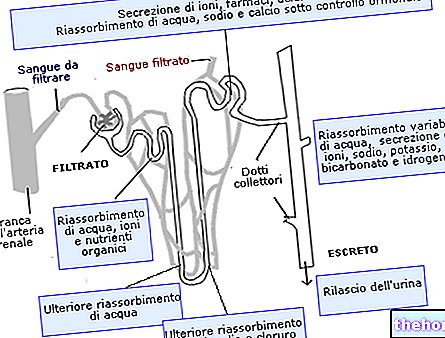«Introduction: muscle fibers
While in different subjects the number of fibers within the same muscle is a fairly constant parameter, greater inter-individual differences are recorded in the qualitative composition in these fibers. The proportion of the various muscle types is closely linked to hereditary and environmental factors.
The composition of the muscles in terms of fast and slow fibers also varies in the same individual, in relation to the muscle considered. The antigravities have, for example, a higher percentage of slow fibers (tonic muscles), while those of the arms are richer in fast-twitch fibers (phasic muscles).
Percentage of slow and fast fibers present in human skeletal muscles (*)
Short adductor
Great adductor
Gluteus maximus
Ileo psoas
Pettineo
Psoas
Gracile
Semimembranous
Tensor of the fascia lata
Broad Intermediate Quadric. Femor.
Vasto Medial Quadric. Femor.
Soleus
Great dorsal
Brachial biceps
Deltoid
Rhomboid
Trapezium
Long adductor
Twins
Medium / small buttock
External / internal shutter
Piriform
Biceps femoris
Sartorio
Semitendinosus
Popliteal
Wide lateral
Quadric rectus femoris. Femor.
Tibialis anterior
Rectus abdomen
Brachioradialis
Grand Pectoral
Brachial triceps
Supraspinatus
45
55
50
50
45
50
55
50
70
50
50
75
50
50
60
45
54
45
50
50
50
50
65
50
50
50
45
45
70
46
40
42
33
60
15
15
20
--
15
20
15
15
10
15
15
15
--
--
--
--
--
15
20
20
20
20
10
20
15
15
20
15
10
--
--
--
--
--
40
30
30
50
40
30
30
35
20
35
35
10
50
50
40
55
46
40
30
30
30
30
25
30
35
35
35
40
20
54
60
58
67
40
Where is it:
ST = slow fibers;
FTa = fast fibers with high metabolic, oxidative and glycolytic potential;
FTb = fast fibers with high predominantly glycolytic potential
The number of fibers, genetically determined, remains almost constant throughout the life span and can increase significantly only if the athlete undergoes genetic doping or makes extensive use of anabolic steroids. Specific training therefore does not serve to increase the number of fibers, but to stimulate the increase in volume and specialization towards the most suitable type for the sport practiced.
The importance of the percentage composition of the various types of fibers is also evidenced by the significant differences that separate high-level athletes engaged in different sports.
Percentage of slow and fast fibers present in human skeletal muscles (*)
% LENS FIBERS
AUTHORS
Athletics
- 100 - 200 m.
- 400 m.
- 800 - 1500
- 5000 m. - marathon
- marchers
- launchers
- jumpers
Ski
- bottom
- slalom
- jump from the trampoline
Ice Hockey
Ice skating
Road cyclists
Canoe
I swim
Orientation
Water skiing
Struggle
Weightlifting
Body building
Handball
Volleyball
Field hockey
Football
Non-competitive sportsmen
35 - 40
40 - 50
55 - 60
65 - 80
65 - 70
50 - 55
50 - 55
65 - 85
50 - 55
50 - 55
45 - 60
65 - 70
55 - 60
55 - 60
50 - 60
65 - 70
50 - 55
50 - 55
40 - 45
40 - 45
45 - 55
45 - 55
45 - 50
40 - 45
40 - 60
Woods. 1985; Tihanyi, 1985.
Woods. 1985; Tihanyi, 1985.
Woods. 1985; Tihanyi, 1985.
Woods. 1985; Komi et al., 1977.
Woods. 1985.
Woods. 1985.
Woods. 1985; Tihanyi, 1985.
Komi et al., 1977; Tesch et al., 1975.
Komi et al., 1977.
Komi et al., 1977.
Komi et al., 1977.
Komi et al., 1977.
Burke et al., 1977.
Komi et al., 1977; Gollnick et al., 1972.
Lundin, 1974; Gollnick et al., 1972
Thorxstensson et al., 1977; Gollnick et al., 1972.
Tesch et al., 1975.
Tesch et al., 1982.
Tesch et al., 1975.
Hakkinen et al., 1984.
Tesch et al., 1982.
Non-public work Univ. Jyvaskyla.
Prince et al., 1977.
Jacobs, 1982; Apor, 1988.
Carlsson et al., 1975.
* (from Pierrynowski and Morrison integrated with Johnson and coll.)
(C. Bosco: "Muscle strength. Physiological aspects and practical applications" -
Sports Press Society 1997)
The composition in muscle fibers is one, but not the only one, of the main elements that define the specific attitude towards the various types of sport. In fact, performance derives from the combination of numerous physiological, biochemical, neurological, biomechanical and psychological factors.
Personalized training and muscle fibers "




























